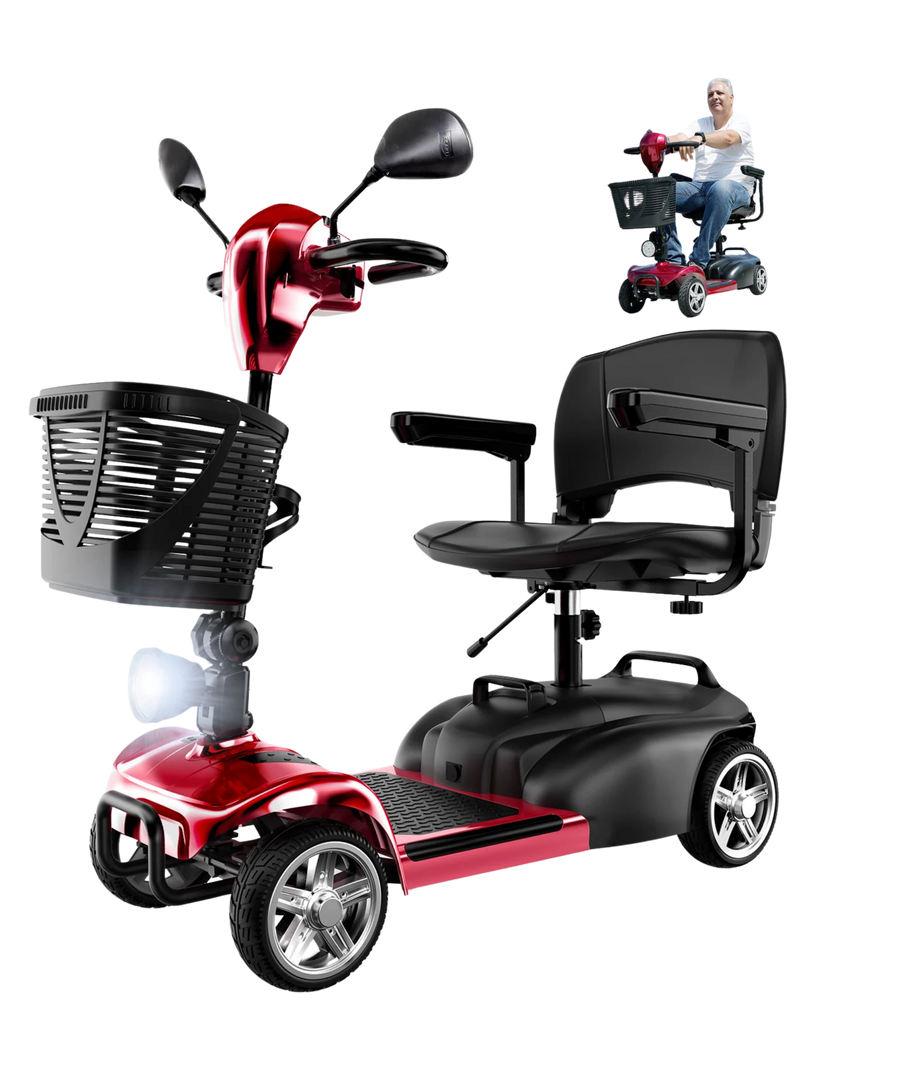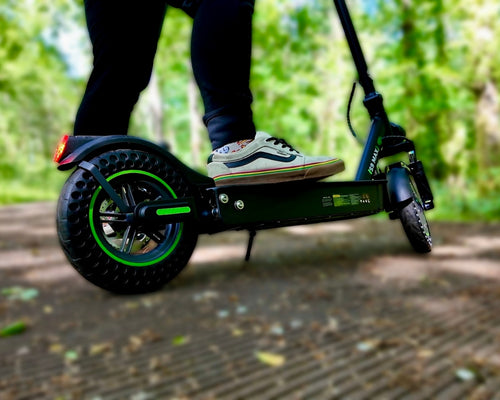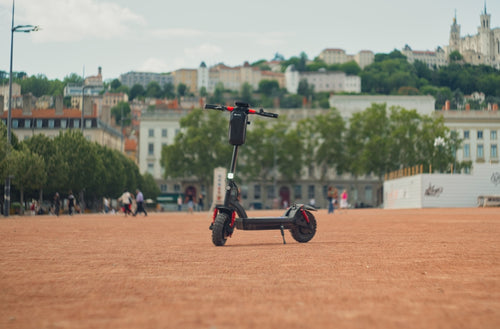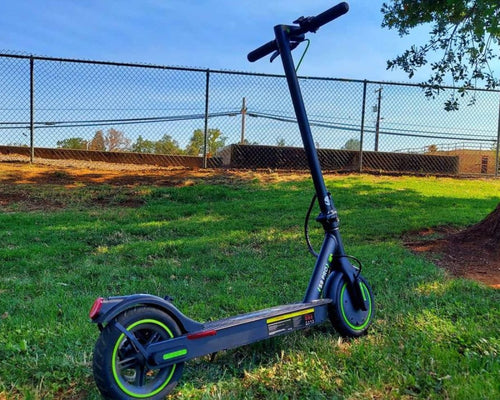
How Do You Get Bike Grease Out of Clothes?
Bike rides and e-bike adventures are fun, but nothing ruins your day faster than bike grease stains on your clothes. Whether it’s from a slipped chain during a Sunday ride, routine maintenance, or working on your e-bike, grease can leave stubborn marks that seem impossible to remove. Fortunately, with the right techniques, you can restore your clothing to its original condition. In this guide, we’ll cover proven methods for removing bike grease stains from different fabrics, using common household items and specialized detergents.
Why Bike Grease Stains Are Difficult to Remove
Bike grease stains are notoriously stubborn, and there’s a good reason for that. Understanding why grease clings to fabrics can make the process of removing it much more manageable.
What Makes Grease Stick to Clothes?
Bike grease is a combination of oils, lubricants, and fine metallic particles. Its oily nature means it penetrates deeply into fabric fibres, creating a strong bond that water alone cannot break. Unlike water-based stains, grease does not dissolve easily, which is why a standard wash often isn’t enough. The longer the grease sits on the fabric, the more it seeps into the fibres, making it even harder to remove.
Fresh vs Dried Grease Stains
The age of the stain significantly affects how difficult it is to treat. Fresh grease stains are usually soft and oily, which means they can be lifted relatively easily with the right cleaning agent. In contrast, dried grease hardens over time and may mix with dirt or dust, forming a crust that clings stubbornly to the fabric. This is why different removal methods may be needed depending on whether the stain is fresh or set-in.
Why Quick Action Is Crucial
Acting promptly is the single most effective way to prevent permanent marks. Treating a grease stain as soon as it occurs stops it from embedding deeply into the fibres. Quick action also reduces the need for harsh scrubbing or multiple wash cycles, which can damage delicate fabrics over time. By tackling the stain early, you improve your chances of completely removing it and keeping your clothes looking as good as new.
How to Remove Bike Grease Stains with Dishwashing Liquid
Dishwashing liquid is one of the most effective and accessible solutions for tackling bike grease stains. Its grease-cutting properties, designed for removing stubborn fats from dishes, work just as well on fabrics. With the right approach, even tough stains on everyday clothing can be lifted without damaging the material.
Best For
This method works particularly well for fresh grease stains on cotton and synthetic fabrics such as polyester or nylon. These fabrics can withstand gentle scrubbing and washing, making dishwashing liquid an ideal choice. Avoid using this method on delicate fabrics like silk or wool, as it can be too harsh and may damage the fibres.
Step-by-Step Guide
-
Gently Rub Dishwashing Liquid into the Stain
Apply a small amount of dishwashing liquid directly onto the grease stain. Using your fingers or a soft cloth, gently rub the liquid into the affected area. The key is to work from the outside of the stain toward the centre to prevent spreading. -
Optional: Create a Paste for Tough Stains
For more stubborn marks, mix dishwashing liquid with a little baking soda to form a paste. Apply the paste to the stain and scrub lightly with an old toothbrush. The baking soda adds mild abrasiveness, helping lift the grease without harming the fabric. -
Flush with Cool Water
Rinse the treated area thoroughly under cool running water. Make sure the water runs from the back of the stain to push grease out of the fibres, rather than pressing it further in. Avoid hot water, which can set the stain. -
Wash According to Care Label Instructions
Once pre-treated, wash the garment as usual, following the instructions on the care label. This could be in a washing machine or by hand, depending on the fabric type. -
Hang to Air Dry and Inspect
After washing, hang the item to air dry rather than using a tumble dryer. Heat from a dryer can set any remaining grease, making it harder to remove. Once dry, check if any stain remains and repeat the process if necessary.
Tips for Dried Stains
If the grease has already dried and hardened, apply a light dusting of talcum powder or cornflour to the stain first. Let it sit for a few minutes to absorb excess grease. Then follow the steps above using dishwashing liquid. This additional step can help loosen the stain, making it much easier to remove.
Using Biological Detergent to Remove Grease Stains
Biological detergent is one of the most effective methods for removing stubborn grease stains from clothing. These detergents contain enzymes that break down proteins, fats, and oils—making them perfect for tackling the thick, oily residue that comes from bike chains. Whether you’re dealing with a fresh mark or an older, dried-in stain, a biological detergent can restore your clothes to a clean, stain-free state without too much effort.
Best For
This method is ideal for fresh and dried grease stains on synthetic fabrics, such as polyester, nylon, or elastane blends. These materials can withstand the enzymatic cleaning power of biological detergents and the gentle agitation of a washing machine. Because biological detergents rely on enzymes, they work best at moderate temperatures (30–40°C), where the enzymes remain active and effective.
Avoid using this method on delicate fabrics like wool or silk, as enzymes can break down natural proteins in these fibres, leading to thinning or damage. Always check the garment’s care label before starting.
Step-by-Step Guide
-
Pre-Treat the Stain with Biological Detergent
Apply a small amount of biological detergent—such as Persil Bio Liquid—directly onto the grease stain. Gently work it into the fabric using your fingertips or a soft cloth. This step helps the enzymes begin breaking down the grease before washing. -
Rub Gently or Use a Soft Toothbrush
If the stain is stubborn or has dried, lightly scrub the area with a soft, clean toothbrush. This helps lift the grease from deep within the fabric fibres without damaging them. Be gentle to avoid fraying or pilling the material. -
Let It Sit for a Few Minutes
Leave the detergent on the stain for several minutes—typically 5 to 10 minutes—or follow the specific instructions on the product packaging. This waiting period allows the enzymes enough time to act on the grease and break it down effectively. -
Flush with Cool Water
Rinse the treated area thoroughly under cool running water. Let the water flow from the back of the fabric to push the grease out, rather than pressing it deeper into the fibres. Avoid hot water, as heat can set the stain permanently. -
Wash as Usual
Once pre-treated, wash the garment according to the care label. A machine wash at 30°C or 40°C works best for most synthetic fabrics. Use your regular dose of biological detergent for the full wash cycle. -
Air Dry and Check the Result
After washing, allow the garment to air dry naturally. Do not tumble dry until you are sure the stain is completely gone—heat can make any remaining grease more difficult to remove. Once dry, inspect the area; if the stain is still visible, repeat the process before drying again.
Important Notes
Biological detergents are highly effective but not suitable for every type of fabric. Do not use them on wool, silk, or other natural fibres, as the enzymes can break down the fabric structure over time. When in doubt, check the garment’s care label or test a small, hidden area first. For delicate or expensive items, you may want to seek advice from a professional dry cleaner before attempting home treatment.
Removing Grease Stains with Baking Soda
For delicate fabrics such as silk, wool, or other sensitive materials, harsh chemicals and vigorous scrubbing can easily damage fibres. Baking soda offers a gentle yet effective solution, drawing grease out of the fabric without compromising its texture or colour. This method is particularly suitable for both fresh and dried bike grease stains.
Best For
This technique works best for delicate fabrics that cannot tolerate strong detergents or heavy scrubbing. Silk, wool, and fine synthetics benefit from baking soda’s absorbent properties, making it a safe option for preserving the integrity of your clothing while effectively treating grease stains.
Step-by-Step Guide
-
Sprinkle Baking Soda or Talcum Powder
Cover the grease stain generously with baking soda or talcum powder. These powders act like a sponge, drawing the grease out of the fabric fibres. Ensure the stain is fully covered for maximum effectiveness. -
Leave Overnight
Allow the powder to sit on the stain overnight. During this time, it absorbs the grease, lifting it away from the fibres. For fresh stains, a few hours may be sufficient, but for set-in marks, overnight treatment is recommended. -
Brush Off the Powder
In the morning, gently brush away the baking soda or talcum powder using a soft brush or cloth. Most of the grease should be absorbed and removed at this stage. -
Wash According to Care Label
After treating the stain, wash the garment following the care label instructions. For delicate fabrics, a hand wash or delicates cycle with a mild detergent, such as Persil Silk & Wool, is ideal. Always follow the recommended dosage and temperature guidelines to avoid damage.
Professional Advice
If you are unsure whether your garment can tolerate home treatment, it is safest to consult a professional dry cleaner. Some delicate fabrics may require specialist care to remove grease stains without causing shrinkage, colour loss, or fibre damage. A dry cleaner can offer treatment options tailored to your fabric type, ensuring the stain is removed safely.
Looking for an E-Bike? Discover Top isinwheel Models Today
|
Images |
 |
 |
 |
 |
 |
 |
|
Models |
||||||
|
Top Speed |
20 MPH |
20 MPH |
18.6 MPH |
21.7 MPH |
19 MPH |
20 MPH |
|
Peak Power |
500W |
500W |
500W |
500W |
500W |
750W |
|
Battery |
36V 7.8Ah |
36V 13Ah |
36V 7.8Ah |
36V 10.4Ah |
36V 10.4Ah |
36V 10.4Ah |
|
Max Range |
28 miles |
65 miles |
35 miles |
60 miles |
55 miles |
55 miles |
|
Speed (before unlock) |
10/15/25 km/h |
6/10/15/20/25 km/h |
10/15/25 km/h |
6/10/15/20/25 km/h |
6/10/15/25 km/h |
6/10/15/20/25 km/h |
|
Speed (after unlock) |
15/25/32 km/h |
10/15/20/25/32 km/h |
15/25/30 km/h |
6/10/15/20/35 km/h |
15/25/30 km/h |
10/15/20/25/32 km/h |
|
Max Load |
120 kg |
120 kg |
120 kg |
150 kg |
120 kg |
120 kg |
|
Net Weight |
23.2 kg |
27 kg |
23.3 kg |
27kg |
26.5 kg |
28.4 kg |
|
Suspension |
Rear mid shock absorber |
Front suspension |
Adjustable front fork + comfort saddle |
Hydraulic fork |
Dual |
Aluminum front fork |
|
Max Climb |
20% |
37% |
25% |
20% |
20% |
20% |
|
Tire Size |
14×1.95" |
26×1.95" |
16×1.75" |
26×1.95" |
16×2.15" |
26×1.95" |
|
Tire Type |
Pneumatic |
Pneumatic |
Pneumatic |
Pneumatic |
Pneumatic |
Pneumatic |
|
IP Rating |
IPX4 |
IP65 |
IPX65 |
IPX5 |
IPX4 |
IPX4 |
|
Removable Battery |
No |
Yes |
No |
Yes |
Yes |
Yes |
|
Rider Height |
150–185 cm |
160–192 cm |
155–185 cm |
160–190 cm |
140–180 cm |
150–192 cm |
Additional Tips for Successful Grease Stain Removal
Even with the best cleaning methods, some grease stains can be tricky to remove. These tips will help you maximize your chances of completely lifting the stain while keeping your clothes safe.
1. Avoid Heat Until the Stain is Gone
Heat can set grease stains permanently, making them almost impossible to remove. Avoid tumble dryers, irons, and hot water until the stain is fully treated. Instead, allow garments to air dry after washing. This way, you can inspect the stain and repeat treatment if necessary without risking permanent marks.
2. Repeat Treatment if Needed
Some grease stains, especially old or stubborn ones, may not come out on the first try. Don’t be discouraged if the stain persists. Reapply your chosen method—whether it’s dishwashing liquid, biological detergent, or baking soda—and repeat the process until the stain is gone. Patience is key for complete removal.
3. Act Quickly
Time is your greatest ally when dealing with bike grease stains. The sooner you treat the stain, the less time the grease has to penetrate the fabric fibers. As soon as the spill occurs, blot excess grease, apply a cleaning agent, and start the stain removal process. Quick action greatly increases the likelihood of full removal.
4. Test Cleaning Agents on a Hidden Area
Even mild detergents or household remedies can sometimes react unexpectedly with certain fabrics. Before applying any cleaning solution to the stain, test it on a small, inconspicuous area of the garment. This prevents potential discoloration, damage, or fabric weakening.
5. Use Gentle Tools
When scrubbing or working in a cleaning agent, use soft brushes, cloths, or even your fingers rather than harsh scrubbers. Delicate fabrics can be damaged if scrubbed too hard, so gentle motion is essential to lift the grease without harming the fibers.
6. Patience and Observation
After applying your cleaning method, take the time to inspect the garment once it dries. Some stains may appear reduced but still linger in hidden areas. Multiple treatments and careful observation can ensure the fabric returns to its original, stain-free condition.
Conclusion
Bike grease stains can be tough, but with quick action and the right methods, they can be removed effectively. Knowing how to remove grease stains from clothes helps keep your wardrobe clean and fresh, even after messy bike or e-bike rides.
Use dishwashing liquid for fresh stains, biological detergents for tougher marks, and baking soda for delicate fabrics like silk and wool. Acting promptly and repeating treatments if needed ensures your clothes stay stain-free, fresh, and well-maintained, ready for your next bike or e-bike adventure.
The Latest Posts
Explore isinwheel products
City E Scooter | Off-Road Scooter
Fastest Scooter | Kids Scooters































































Leave a comment